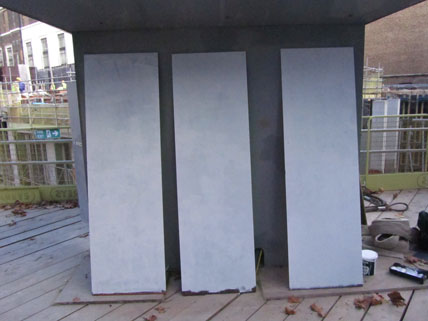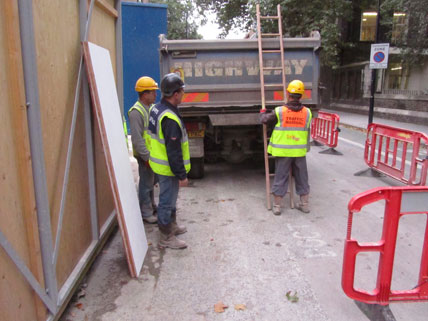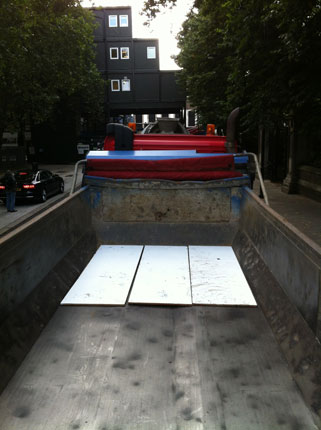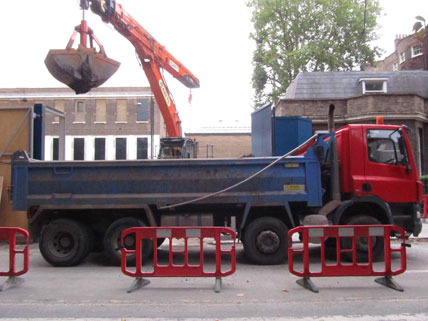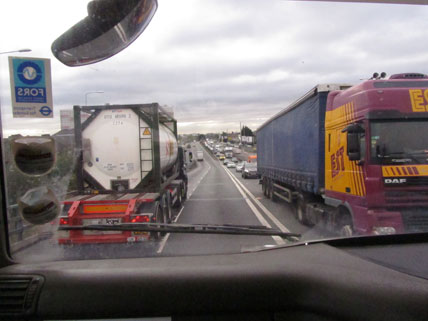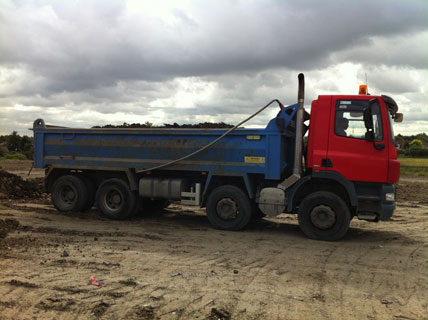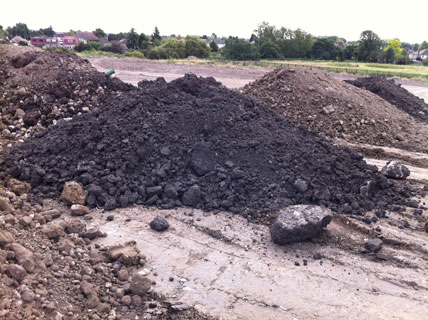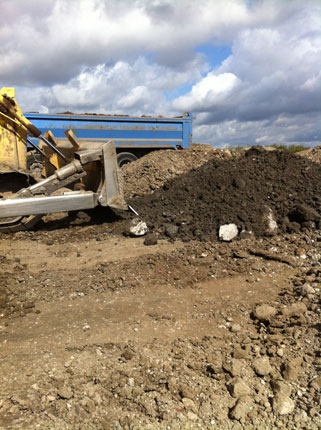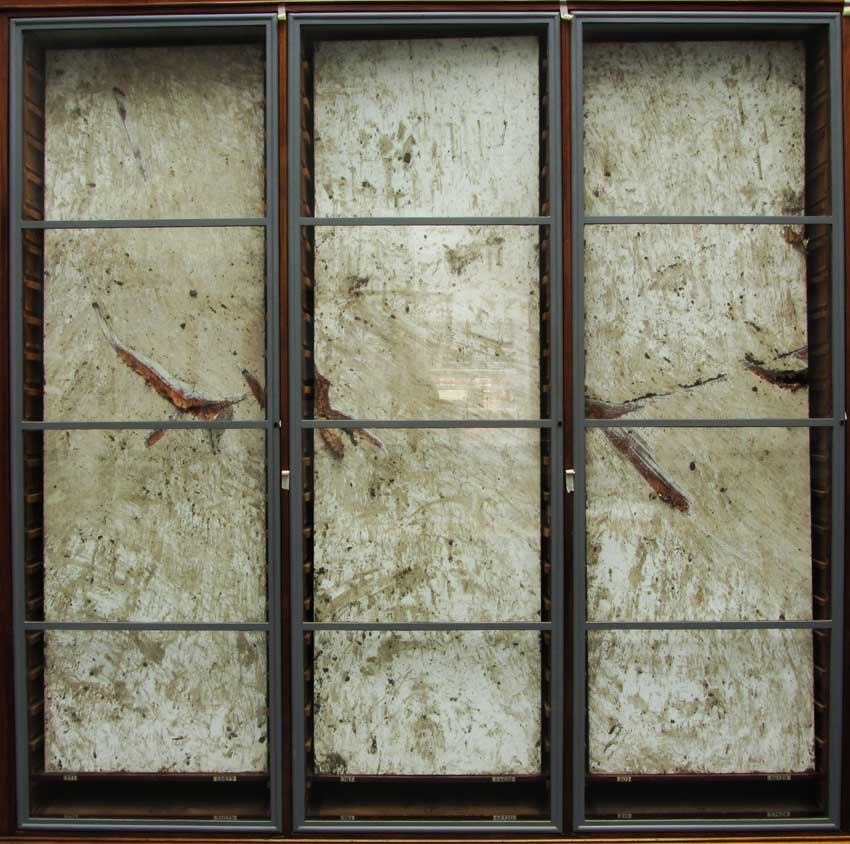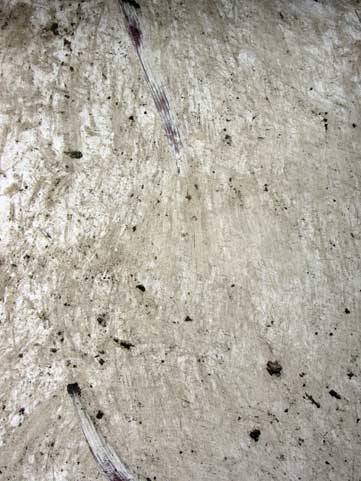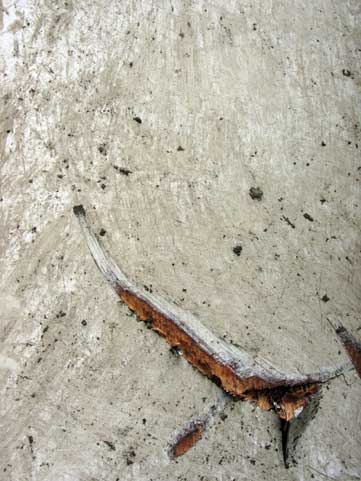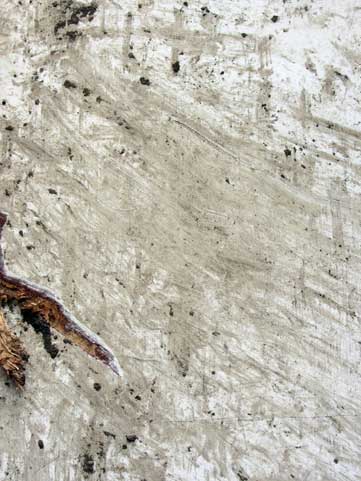< 08/20 >
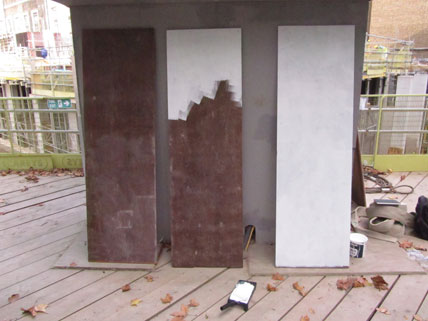
The entire site was excavated to
four storeys below street level. The
London clay that had laid silent and
compacted for millions of years was
suddenly being charged with a fluid
energy as it was moved from one pile
to another, picked up by one digger
and fed to the next and then to a final
pile where the entire volume of clay
was divided into individual lorry loads.
Fascinated by this repetitive act,
I asked if I could continue on the
clay's journey and ride in one of the
lorries to where the clay would finally
rest again. I also asked if I could line
the back of the lorry with paper so
the clay would leave marks there
as a drawing. Carey's, the contractor
carrying out the ecavation, told me
the weight of the clay would drag it
out but were happy to experiment
with the idea. After they were proved
right they suggested using sheets of
plywood instead, which they supplied
for further experiment.
At the tip a bulldozer made the final
cut marks in these sheets as it searched
tentatively for them beneath their
load of clay.
In using tools, materials, objects
and processes integral to the build,
images are created which embody
and articulate that environment.
